
Eero Saarinen was a Finnish-American architect and industrial designer who created a wide array of innovative designs for buildings and monuments, including General Motors Technical Center in Warren, Michigan; the passenger terminal at Dulles International Airport outside Washington, D.C.; the TWA Flight Center at John F. Kennedy International Airport; and the Gateway Arch in St. Louis. He was the son of Finnish architect Eliel Saarinen.
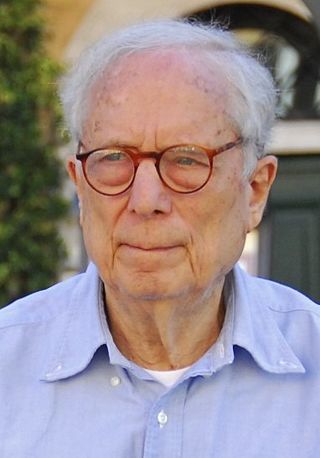
Robert Charles Venturi Jr. was an American architect, founding principal of the firm Venturi, Scott Brown and Associates, and one of the major architectural figures of the 20th century.
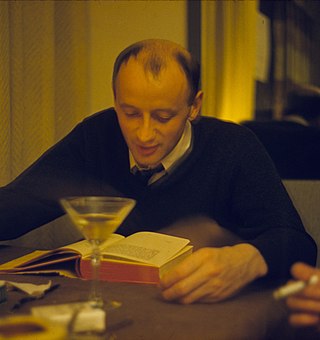
Eamonn Kevin Roche was an Irish-born American Pritzker Prize-winning architect. He was responsible for the design/master planning for over 200 built projects in both the U.S. and abroad. These projects include eight museums, 38 corporate headquarters, seven research facilities, performing arts centers, theaters, and campus buildings for six universities. In 1967 he created the master plan for the Metropolitan Museum of Art, and thereafter designed all of the new wings and installation of many collections including the reopened American and Islamic wings.

The Cranbrook Educational Community is an education, research, and public museum complex in Bloomfield Hills, Michigan. This National Historic Landmark was founded in the early 20th century by newspaper mogul George Gough Booth. It consists of Cranbrook Schools, Cranbrook Academy of Art, Cranbrook Art Museum, Cranbrook Institute of Science, and Cranbrook House and Gardens. The founders also built Christ Church Cranbrook as a focal point in order to serve the educational complex. However, the church is a separate entity under the Episcopal Diocese of Michigan. The sprawling 319-acre (1,290,000 m2) campus began as a 174-acre (700,000 m2) farm, purchased in 1904. The organization takes its name from Cranbrook, England, the birthplace of the founder's father.

Elizabeth Plater-Zyberk is a professor at the University of Miami's School of Architecture and an architect and urban planner in Miami, Florida.

Ezra Stiles College is one of the fourteen residential colleges at Yale University, built in 1961 and designed by Eero Saarinen. It is often simply called "Stiles", despite an early-1990s crusade by then-master Traugott Lawler to preserve the use of the full name in everyday speech. The college is named after Ezra Stiles, the seventh President of Yale. Architecturally, it is known for its lack of right angles between walls in the living areas. It sits next to Morse College.
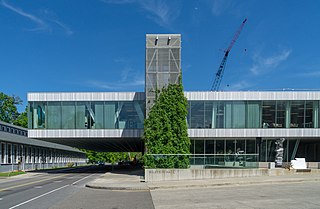
The College of Architecture, Art, and Planning (AAP) is the school of architecture at Cornell University in Ithaca, New York. It offers 20 undergraduate and graduate degrees in five departments: architecture, art, urban planning, real estate, and design technology. Aside from its main campus in Ithaca, AAP offers programs in Rome, Italy and in New York City, New York.

The Harvard Graduate School of Design (GSD) is the graduate school of design at Harvard University, a private research university in Cambridge, Massachusetts. It offers master's and doctoral programs in architecture, landscape architecture, urban planning, urban design, real estate, design engineering, and design studies.

Paul Marvin Rudolph was an American architect and the chair of Yale University's Department of Architecture for six years, known for his use of reinforced concrete and highly complex floor plans. His most famous work is the Yale Art and Architecture Building, a spatially-complex Brutalist concrete structure. He is one of the modernist architects considered an early practitioner of the Sarasota School of Architecture.
The Tyler School of Art and Architecture is based at Temple University, a large, urban, public research university in Philadelphia, Pennsylvania. Tyler currently enrolls about 1,350 undergraduate students and about 200 graduate students in a wide variety of academic degree programs, including architecture, art education, art history, art therapy, ceramics, city and regional planning, community arts practices, community development, facilities management, fibers and material studies, glass, graphic and interactive design, historic preservation, horticulture, landscape architecture, metals/jewelry/CAD-CAM, painting, photography, printmaking, sculpture and visual studies.
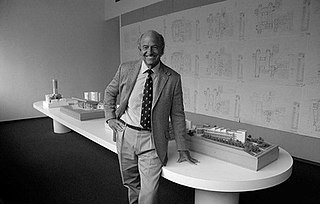
Charles Gwathmey was an American architect. He was a principal at Gwathmey Siegel & Associates Architects, as well as one of the five architects identified as The New York Five in 1969. Gwathmey was perhaps best known for the 1992 renovation of Frank Lloyd Wright's Guggenheim Museum in New York City.

Rudolph Hall is one of the earliest and best-known examples of Brutalist architecture in the United States. Completed in 1963 in New Haven, Connecticut, the building houses Yale University's School of Architecture. Until 2000, it also housed the School of Art.

The A. Alfred Taubman College of Architecture and Urban Planning, also known as Taubman College, is the school of urban planning and one of the nineteen schools of the University of Michigan located in Ann Arbor, Michigan.

The University of Cincinnati College of Design, Architecture, Art, and Planning (DAAP) is an arts and architecture college of the University of Cincinnati in Cincinnati, Ohio. It was initially established as the School of Applied Art in 1926.

Knoll is an American company that manufactures office systems, seating, storage systems, tables, desks, textiles, and accessories for the home, office, and higher education. The company is the licensed manufacturer of furniture designed by architects and designers such as Harry Bertoia, Ludwig Mies van der Rohe, Florence Knoll, Frank Gehry, Charles Gwathmey, Maya Lin, Marcel Breuer, Eero Saarinen, and Lella and Massimo Vignelli, under the company's KnollStudio division. Over 40 Knoll designs can be found in the permanent design collection of the Museum of Modern Art in New York City.

The Yale School of Art is the art school of Yale University. Founded in 1869 as the first professional fine arts school in the United States, it grants Masters of Fine Arts degrees to students completing a two-year course in graphic design, painting/printmaking, photography, or sculpture.

Texas Tech University College of Architecture is the college of architecture at Texas Tech University in Lubbock, Texas. The architecture program has existed at Texas Tech University since 1927. Texas Tech's Master of Architecture is a professional degree and it is accredited by the National Architectural Accrediting Board (NAAB). On November 30, 2022, the school announced it would be named the Huckabee College of Architecture.
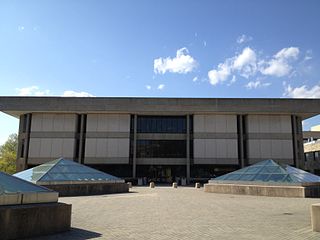
The College of Architecture, Arts, and Design formerly the College of Architecture and Urban Studies at Virginia Tech consists of four schools, including the School of Architecture, which consistently ranks among the best in the country. Headquartered in Blacksburg, Virginia, the college also has sites in Alexandria, Virginia, and Riva San Vitale, Switzerland. Spread out among these three locations, the college consists of nearly 2,200 students, making it one of the largest schools of architecture in the nation.
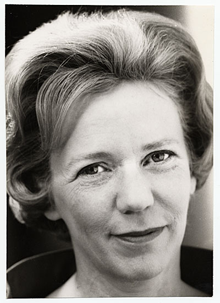
Aline Bernstein Saarinen was an American art and architecture critic, author and television journalist.
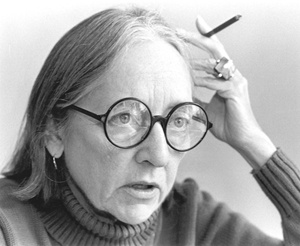
Judith Chafee nee Davidson Bloom (1932–1998) was an American architect known for her work on residential buildings in Arizona and for being a professor of architecture at the University of Arizona. She was a recipient of the National Endowment of the Arts Fellowship to the American Academy in Rome during the middle of her career and was the first woman from Arizona to be named a Fellow of the American Institute of Architects.






















